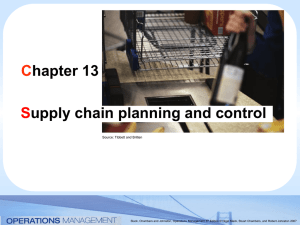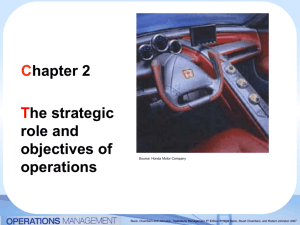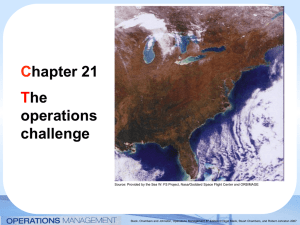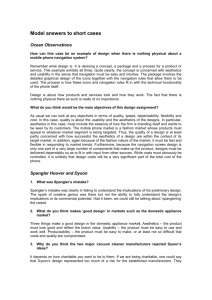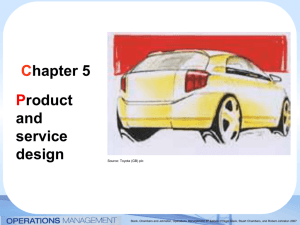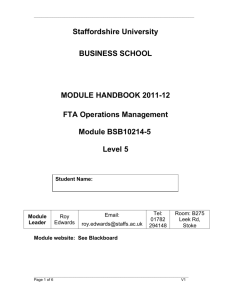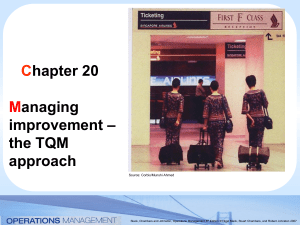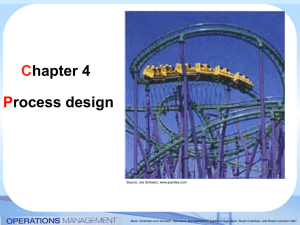Chapter 9a Powerpoint slides
advertisement
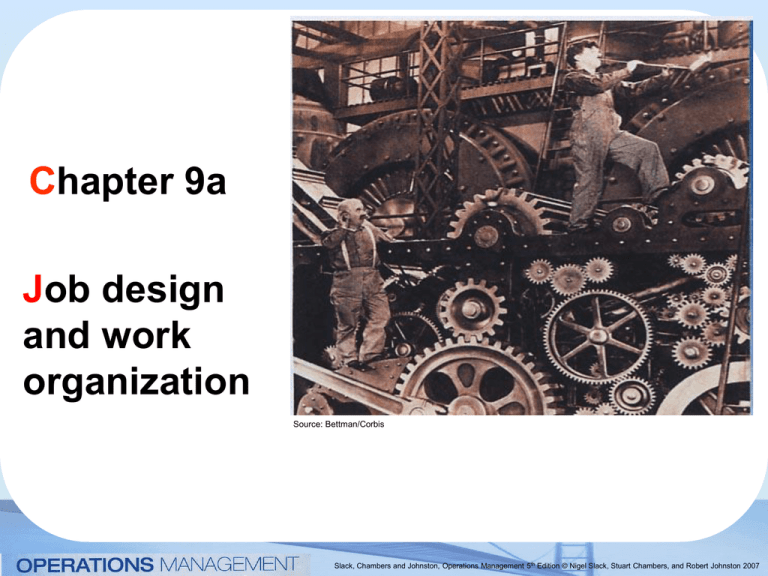
Chapter 9a Job design and work organization Source: Bettman/Corbis Slack, Chambers and Johnston, Operations Management 5th Edition © Nigel Slack, Stuart Chambers, and Robert Johnston 2007 The elements of job design Slack, Chambers and Johnston, Operations Management 5th Edition © Nigel Slack, Stuart Chambers, and Robert Johnston 2007 The objectives of job design quality speed dependability Job design impacts on flexibility cost health and safety quality of working life Slack, Chambers and Johnston, Operations Management 5th Edition © Nigel Slack, Stuart Chambers, and Robert Johnston 2007 Some influences on job design and work organization Division of labour Flexible working Scientific management Job design Team working Empowerment Ergonomics Behavioural approaches Slack, Chambers and Johnston, Operations Management 5th Edition © Nigel Slack, Stuart Chambers, and Robert Johnston 2007 Evolution of Job Design 1900s to 1960s Scientific Management/Assembly Lines Task specialisation Minimal worker skills Repetition Minimal job training Mass production Piece-rate wages Time as efficiency Minimal job responsibility Tight supervisory control Slack, Chambers and Johnston, Operations Management 5th Edition © Nigel Slack, Stuart Chambers, and Robert Johnston 2007 Evolution of Job Design 1970s to 2000s Horizontal job enlargement Vertical job enlargement Job responsibility and empowerment Training and education Job rotation Higher skill levels Team problem solving Employee involvement and integration Focus on quality Slack, Chambers and Johnston, Operations Management 5th Edition © Nigel Slack, Stuart Chambers, and Robert Johnston 2007 These elements of job design can be used to help analyse a particular job situation Worker Analysis Task Analysis Environmental Analysis Slack, Chambers and Johnston, Operations Management 5th Edition © Nigel Slack, Stuart Chambers, and Robert Johnston 2007 Task Analysis Description of tasks Task sequence Function of tasks Frequency of tasks Relationship with other jobs/tasks Performance Information requirements Control requirements Error possibilities Task duration(s) Equipment requirements Slack, Chambers and Johnston, Operations Management 5th Edition © Nigel Slack, Stuart Chambers, and Robert Johnston 2007 Worker Analysis Capability requirements Performance requirements Skill level Physical requirements Mental stress Boredom / Motivation Level of responsibility Quality responsibility Empowerment level Slack, Chambers and Johnston, Operations Management 5th Edition © Nigel Slack, Stuart Chambers, and Robert Johnston 2007 Environmental Analysis Work place location Process location Temperature and humidity Lighting Ventilation Safety Logistics Space requirements Noise Slack, Chambers and Johnston, Operations Management 5th Edition © Nigel Slack, Stuart Chambers, and Robert Johnston 2007
